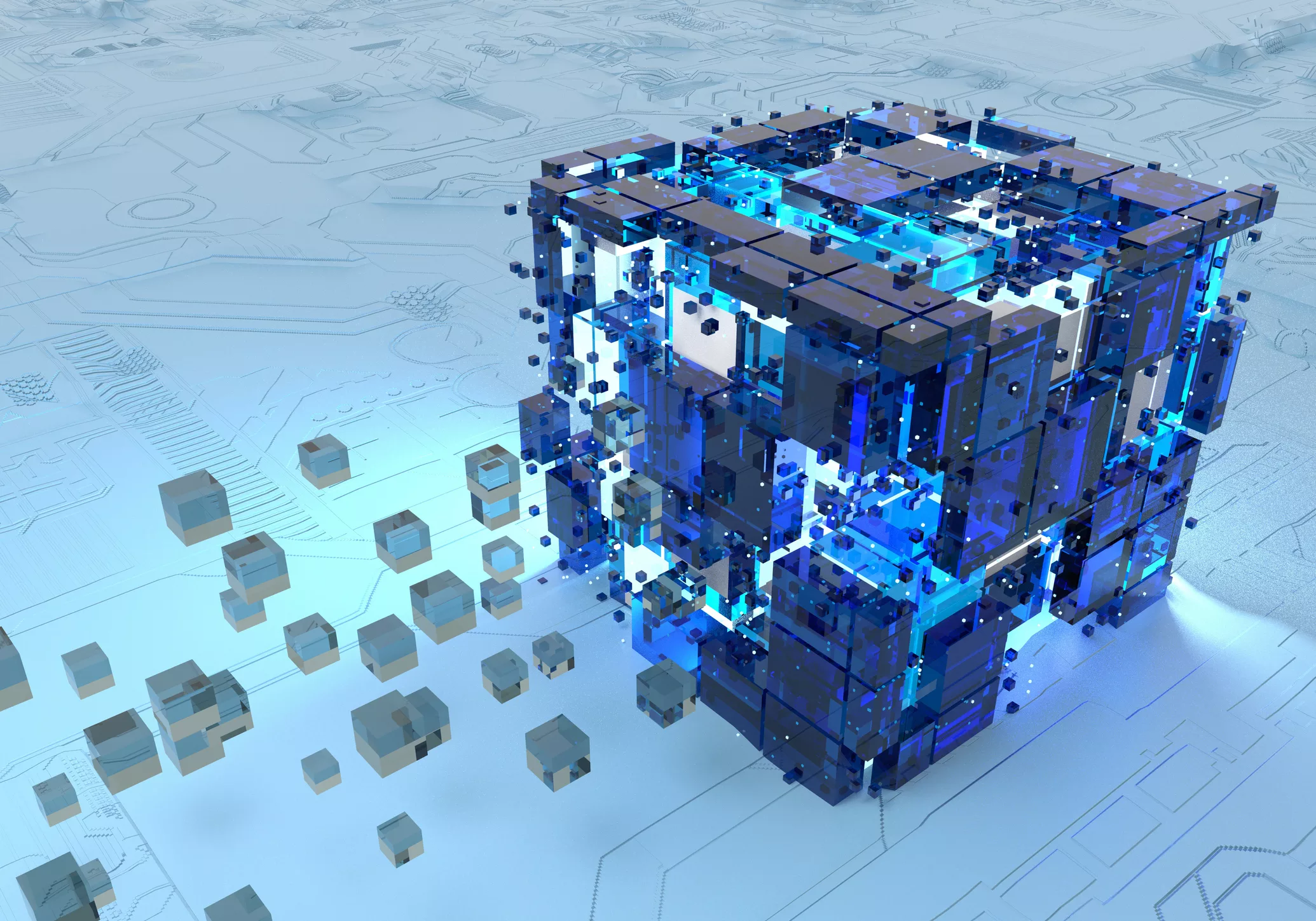Welcome to the exciting world of machine learning pipelines on Google Cloud Platform (GCP)! In this era of rapidly advancing technology, machine learning has emerged as a powerful tool that enables computers to learn from data and make intelligent decisions. From self-driving cars to personalized recommendations, machine learning is at the heart of cutting-edge innovations.
But what exactly is a machine learning pipeline? Think of it as a well-orchestrated symphony where different components work together seamlessly to transform raw data into actionable insights. These pipelines not only streamline the entire process but also enhance efficiency and accuracy in training and deploying models.
In this blog post, we’ll take you on an exhilarating journey through the different types of machine learning pipelines, delve into how you can create one using GCP, explore the intricacies of training a model, and finally discover how to deploy your masterpiece onto Google Cloud Platform. So fasten your seatbelts as we embark on this adventure! Are you ready? Let’s dive in!
What are the different types of machine learning pipelines?
Machine learning pipelines serve as the backbone of any successful machine learning project. They are a series of interconnected steps that transform raw data into valuable insights. These pipelines can take on different forms, depending on the specific needs and goals of the project.
One type of machine learning pipeline is the data preprocessing pipeline. This involves cleaning and preparing the data for analysis. It may include steps such as removing outliers, handling missing values, normalizing or standardizing features, and encoding categorical variables.
Another type of pipeline is the feature engineering pipeline. This focuses on creating new features from existing ones to improve model performance. Feature selection techniques can be applied to identify the most relevant features, while dimensionality reduction methods like principal component analysis (PCA) can help reduce computational complexity.
Model training pipelines are also crucial in machine learning projects. These involve selecting an appropriate algorithm or model architecture, splitting the data into training and validation sets, fitting the model to the training data, tuning hyperparameters through cross-validation techniques, and evaluating its performance.
There is also a deployment pipeline that allows you to deploy your trained model into production environments where it can generate predictions on new incoming data.
Machine learning pipelines encompass various stages including data preprocessing, feature engineering, model training and deployment. Each stage plays a vital role in ensuring accurate predictions and actionable insights from your machine learning models.
How do you create a machine learning pipeline on Google Cloud Platform?
Creating a machine learning pipeline on Google Cloud Platform (GCP) can be an efficient way to streamline your data processing and model training workflows. GCP offers a range of tools and services that can help you design, implement, and manage your pipelines with ease.
To create a machine learning pipeline on GCP, you can start by defining the different stages or steps involved in your workflow. These stages may include data ingestion, preprocessing, feature engineering, model training, evaluation, and deployment. Each stage can be implemented using specific GCP services such as BigQuery for data storage and querying, Dataflow for data processing, AI Platform for model training and deployment.
Next, you need to connect these stages together using orchestration tools like Apache Airflow or TensorFlow Extended (TFX). These tools enable you to define dependencies between the different stages of your pipeline and schedule their execution.
Once the pipeline is set up, you can use GCP’s powerful infrastructure capabilities to scale it based on your needs. This scalability ensures that your pipeline remains efficient even when dealing with large datasets or complex computations.
In addition to building the pipeline itself on GCP, it’s crucial to consider other factors such as security measures for protecting sensitive data during transit and at rest. You should also have monitoring mechanisms in place to track the performance of each stage within the pipeline so that any issues can be identified and addressed promptly.
Creating a machine learning pipeline on Google Cloud Platform involves leveraging its comprehensive suite of services along with robust orchestration tools. With careful planning and implementation considerations taken into account throughout each step of the process – from data ingestion all the way through deployment – you’ll be well-positioned to develop effective ML solutions efficiently
How do you train a machine learning model?
Training a machine learning model is a crucial step in the development process. It involves feeding data into the model and allowing it to learn patterns and relationships within the data. Here’s how you can train a machine learning model on Google Cloud Platform (GCP).
First, you need to gather and preprocess your data. This includes cleaning up any inconsistencies or errors, handling missing values, and transforming categorical variables into numerical representations.
Next, you’ll need to split your dataset into training and testing sets. The training set will be used to train the model, while the testing set will be used to evaluate its performance.
Once your data is ready, you can choose an appropriate algorithm for your task. GCP provides a wide range of pre-built algorithms that you can use out of the box or customize based on your specific needs.
After selecting an algorithm, you can start training the model by fitting it to your training data. This process involves adjusting the weights and biases within the model iteratively until it minimizes its prediction error.
During training, it’s important to monitor various metrics such as accuracy, loss function value, or mean squared error. These metrics help assess how well your model is learning from the data.
You may also want to experiment with different hyperparameters like learning rate or regularization strength to optimize your model’s performance further.
Once your model has been trained sufficiently and meets desired performance criteria on unseen test data, it’s ready for deployment in real-world applications!
Training a machine learning model requires careful preparation of data along with choosing appropriate algorithms and hyperparameter tuning. By following these steps using GCP tools and resources effectively – success in developing accurate models becomes more achievable!
How do you deploy a machine learning model on Google Cloud Platform?
Deploying a machine learning model on Google Cloud Platform (GCP) is an essential step in bringing your models into production and making them accessible to users. GCP provides several options for deploying machine learning models, depending on your specific requirements and preferences.
One option is to use AI Platform Prediction, which allows you to deploy trained models as RESTful APIs with just a few lines of code. This makes it easy to integrate your model into existing applications or services. Another option is using Cloud Functions, which enables you to run lightweight pieces of code in response to events, such as HTTP requests.
If you prefer containerization, you can use Google Kubernetes Engine (GKE) or Cloud Run. GKE allows you to deploy your machine learning model as a Docker container within a managed Kubernetes environment. On the other hand, Cloud Run lets you easily build and deploy stateless containers that scale automatically based on incoming traffic.
To ensure smooth deployment and operation of your model, it’s important to consider factors like scalability, reliability, and security. You should also monitor the performance of your deployed model using tools like Stackdriver Monitoring.
Deploying a machine learning model on Google Cloud Platform offers flexibility and scalability while providing various options tailored to meet different needs
Conclusion
Machine learning pipelines are crucial for implementing and deploying machine learning models efficiently. With Google Cloud Platform, creating and managing these pipelines becomes more accessible and scalable. Through the various tools and services offered by GCP, developers can streamline the entire process from data ingestion to model training and deployment.
In this article, we explored what machine learning is and gained an understanding of different types of machine learning pipelines. We also delved into how to create a machine learning pipeline on GCP, including steps such as data preprocessing, feature engineering, model training, hyperparameter tuning, and evaluation.
Additionally, we learned about deploying a trained machine learning model on Google Cloud Platform using its powerful infrastructure. By leveraging GCP’s AI Platform Prediction service or building custom solutions with Kubernetes Engine or TensorFlow Serving, developers have flexible options when it comes to serving their models at scale.
Machine learning pipelines on GCP empower businesses to harness the power of data-driven insights in a reliable and efficient manner. With the ability to automate workflows while ensuring scalability and performance optimization through cloud-based infrastructure like Google Cloud Platform offers endless possibilities for organizations across industries.
So why not embrace this technology revolution? Start exploring machine learning pipelines on Google Cloud Platform today!





